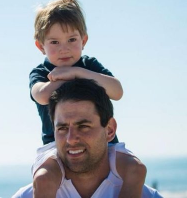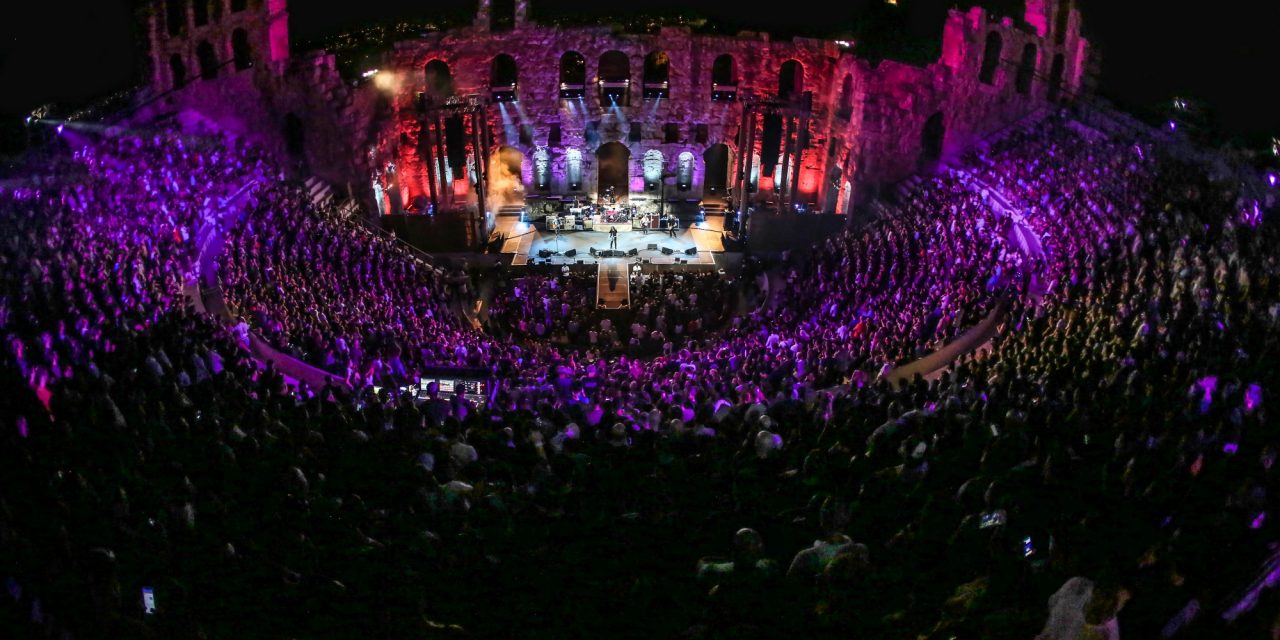Foo Fighters at the Acropolis premieres tomorrow. Behind the magic — with founder/director, Dan Catullo

“If you want to accomplish something that hasn’t been accomplished, you have to be relentlessly and unapologetically determined.” — Bruce Springsteen.
In speaking with Dan Catullo, a fellow New Jersey native, I couldn’t help but notice his perhaps subconscious adherence to one of my favorite quotes from our boss. For Catullo, years of producing a wide array of unique live music material led to fiercely pursuing his ultimate vision, Landmarks Live in Concert — a fascinating concept that pairs renowned artists with historic landmarks they have a connection to, and putting on a once-in-a-lifetime concert experience.
It took a Sly Stallone/Rocky Balboa style effort from Catullo, the program’s founder and director, to get Landmarks Live to where it is today. Having a passion-filled stubbornness was the only way to preserve and relay the full emotion of what transpires in the Landmarks moment. Most importantly, Catullo believed in his dream — showing immense fortitude in trusting his instincts to lead the way.
So far with Landmarks Live in Concert, hosted by Chad Smith, we’ve seen — Alicia Keys at the Apollo, Brad Paisley at Mountaineer Field in West Virginia, Andrea Bocelli at the Palazzo Vecchio and coming tomorrow, Foo Fighters at the Acropolis.
Catullo has been at the center of all the epic shows. Literally at the center — looking out at the mirage he and his team created, while a legendary act performs beside him. But, it’s the quiet moments like being alone in his office staring at a photo on the wall, or sitting with his family watching the show for the first time, where the amazement really sinks in.
Here, Catullo takes us inside the process of how Landmarks Live happens — from concept to securing permits to running on PBS. Though ironing out the logistics can get grueling, it’s the drive to bring the world together via music that takes center stage, and ultimately leads to a second-to-none experience for everyone.
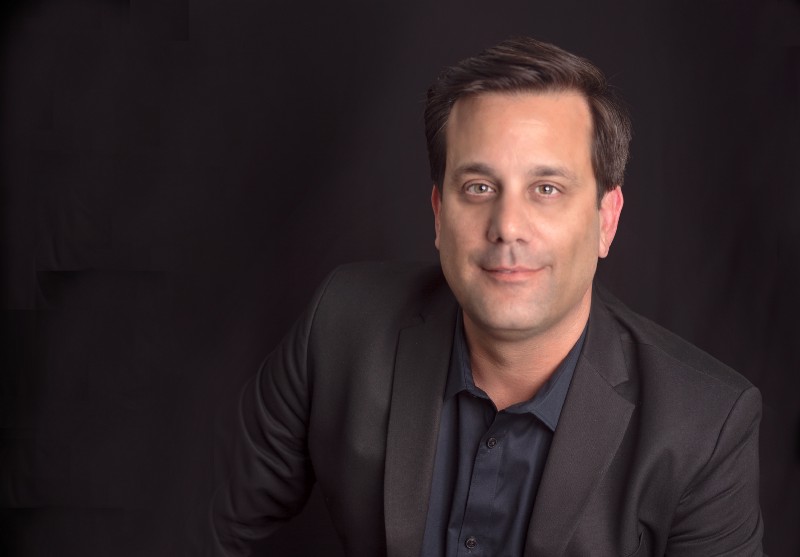
The Landmarks Live History:
I first wanted to do a music TV series about 13 years ago. With the DVD business starting to crash and retailers going out of business, it felt like there was something that wasn’t getting tapped into. In the early 2000’s, nobody cared about bonus features on DVD’s. You’d have it in there just to tell retailers there were bonus features, so they could advertise it. Some of the stories and behind the scenes stuff is very compelling, and I thought, “I wish people can see what we see as producers every day.”
Around 2012, I really got the bug to develop and make something here. We had just gotten off a nice little wave with a film that was I the Executive Producer and Distributor on called The Square. We won Sundance and were nominated for an Oscar. This gave us a different level of credibility where it was now easier for me to get meetings with people. More importantly, I started to really get involved in the documentary community. I got sucked into storytelling. By the end of 2013, I was hyper-focused on documentary, but I really missed music. I had to merge the two together.
We started doing a lot of research and noticed that travel shows were doing very well. My entire career, I had traveled with bands. You become friends and you hear these stories. I realized that nobody was going after the connection of tying it in with a landmark. So, we started developing the concept. I never thought it would take four years to launch it, but launching a TV series is the hardest thing I ever had to do. When we first started, Matt Pinfield and I were arm-in-arm trying to develop it. One of the first ideas was called “New York Live in Concert” and was going to be hosted by Matt and Kayla Riley from Octane. It was more MTV and VH1 based artists because initially we were going to be a VH1 show. We shot the original pilot with Churches at Grand Central. The issue was everybody just wanted “live in concert.” I knew it had to be something deeper. We scrapped that concept and over the next two years we honed in on what it could become.
Finally, we just started doing the show. We put millions of dollars up on our own and went out and made it happen without a network taking the series on yet. We put our money where our mouth is because we believed in the format so much. I knew there was substance here and main media didn’t get it yet, but I figured they would just catch up with us. And that’s exactly what happened.
The Vision:
When our parents grew up, the biggest thing on TV was music. Somehow over the past 20 years, its changed. The networks found a formula that they’ve stuck with. This opened the door perfectly for YouTube to be an outlet for music. Now, music programing is starting to come around again to the point where it’s important and relevant. Over half the views on YouTube are music related. The thing I love about music and Landmarks Live is that the whole world can enjoy it. Music is a universal language. The other thing I was trying to do was create a show where I can sit down with my 80-year-old father and 12-year-old daughter, and we all can enjoy the show equally together. Music shows in the 60’s, 70’s and even 80’s were a familiar gathering. I want to bring that back. Typical music shows now have become so targeted and genre specific. If you have a Kanye West special, only the people who like Kanye West are going to tune in. We are trying to change that. Our Andrea Bocelli Landmarks Live episode for example; I watched because I’m a Chad Smith, my daughter watched because she wants to learn about Italy and my dad watched because he loves Andrea Bocelli. If you look at our artists in the show, we are all over the map. Everyone wanted to stick me into a genre and I would not do that.
The Artists:
Our pitch to artists is, if you can perform anywhere in the world where would it be? We try to find something that has meaning to them. It can be a place they have a fond memory of, a place near where they grew up, or a place they’ve always dreamed of playing. It’s unique because many of these places, you can’t just roll a tour into. We try for landmarks that have never had a concert and would also be impossible to have on the agenda of a normal touring cycle. Once you hit a level of being an arena and stadium band, and you’ve toured for years, everything becomes a bit mundane. You can only go to the Garden or Staples Center so many times. To try and find these places where artists never in a million years thought they would play — that’s the best thing in the world. The reaction on Dave Grohl’s face when he pulled up to the Acropolis was priceless. We captured that moment on camera.
The Landmarks:
Typically, the artist has a few ideas when we first start talking with them. You would think that they’d jump on the more obvious ones like the Great Wall, but they come back with these really interesting places. That’s part of the experience, these artists have performed all over the world. It’s imperative that we find a place that is important to them. The definition of a landmark is broad so we rely on the artist to relay what a landmark is to them.
Then, it’s a combination of us presenting and the artist sharing their thoughts. Since we’ve become more well-established, artists are now approaching us saying, “Hey, I saw what you did with Foo Fighters, we’ve always wanted to play here.” We recently had an artist come to us about doing a show in Iceland at the Blue Lagoon, so now we are exploring whether it is possible. We had another requesting a show at the Taj Mahal. That’s a bit easier because we already spoke with Taj Mahal. We don’t want to offer the artist a place that we can’t deliver. We scour through the different landmarks and then go back with a presentation that contains three options. Our job is to do what they want. Even when we present the idea, the artist takes it and runs with it. The catch is, these shows can take a year or more to plan. A manager does not want to be tied down to that amount of work, that’s where we come in again.
They also must be free shows. In most cases, there is no way to sell tickets to a concert at these landmarks. We underwrite everything, from security to lights at the show, it’s all on our payroll. It can be close to 900 people working for us. It’s a unique dynamic because we also must establish the relationship with the country or local government. For example, we are in constant communication with Cuba right now because we are really expecting a million people for an upcoming show there. We need to figure out if they are going to provide the army or the police support in addition to us bringing everything to Cuba. Their concern is where the infrastructure is coming from so we need to demonstrate that we will provide it, all the way down to us brining in the bottled water. We basically have to build a city. For any of the shows, if one little thing goes wrong, like a cable frying out in the TV truck, we lose everything. It’s a behemoth to do, but when you pull it off it’s so damn exciting.

The Chad Smith Effect:
Everybody loves our host, Chad Smith, from the Red Hot Chili Peppers. One thing I’ve noticed from spending time with bands and touring all these years is that bands talk to other artists differently then they talk to journalists. It seems like Chad is friends with every artist out there. That adds a whole new component and you want to just let them do their thing. When I worked with Chickenfoot back in 2009, I saw how respected Chad was, and I started to get the idea that it would be amazing to get someone like him and have artist-to-artist style conversations. My friend Joe Bosso from Music Radar pushed me to call Chad. He was trying to launch his own interview series called “In Conversation with Chad Smith.” So, I called Chad and his manager and suggested merging what they were doing into what I am doing. I’ll provide the stories and concepts and Chad can run the interview portion. He’s such a natural. It’s funny because for the first three shows (Alicia Keys, Brad Paisley, Andrea Bocelli) Chad was not at the actual concert due to his own touring schedule. We had to bring him in later to do the interviews separately. With Alicia Keys, it almost did not happen, and we were going to have someone else do the interview. Chad was overseas, and Alicia was also doing The Voice. At the last minute, the Chili Peppers canceled a show in Dublin because Anthony Kiedis was sick. I immediately chartered a plane and flew Chad in. He got right off the plane and went to interview Alicia with no prep at all. We were nervous about it, but within two minutes it totally clicked. The artist-to-artist connection took over and they spoke forever.
Foo Fighters at the Acropolis (premiering Friday, November 10th on PBS):
With the upcoming Foo Fighters at the Acropolis show, we were in Greece all week. The band was there for three days and we must have 100 hours of footage in the documentary from interviews, show content and behind the scenes stuff. We go out of our way to make it special for the artist. We put the Foo Fighters up at the nicest hotel. We literally asked them, if you can play anyplace in the world where would it be? They said if you can make the Acropolis happen we will do the show.
Pulling this show off was a miracle. Not only did it take a year to plan, but the negotiations with the government were intense. The Acropolis is over 2,500 years old and is not built to have a rock concert in. We shot at the Parthenon, which is a place they have not issued a permit to shoot at since 1958.
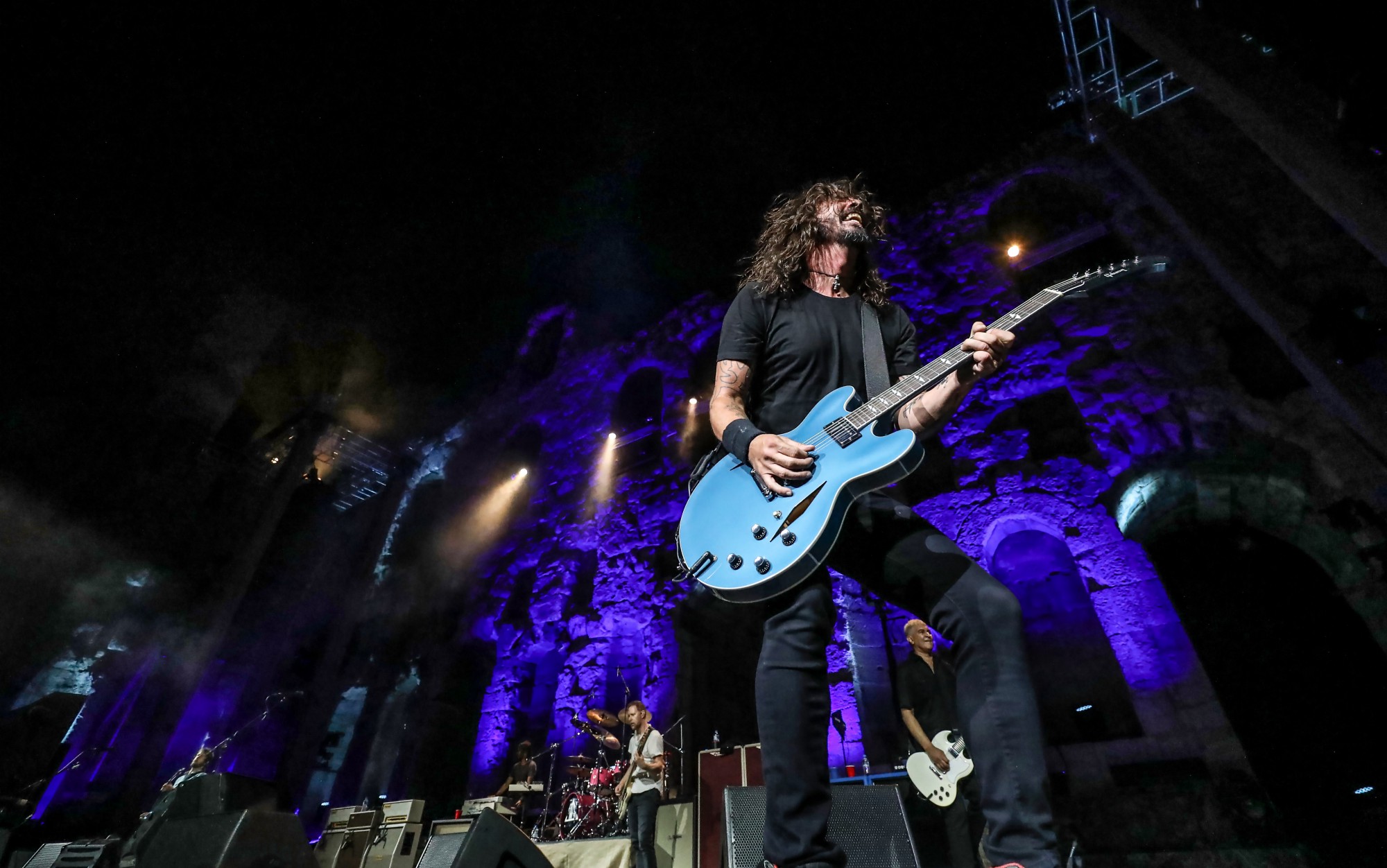
Prep Time:
On average, pre-production takes about six months. It’s very expensive. For the Foo Fighters, we were hundreds of thousands of dollars in just to get the permits, getting approvals from the government and taking multiple trips to Greece. We had to retain people there to help us. We will scout and speak to the appropriate people in the country or at the venue, and then once we get the approvals we will go contract with the band. Sometimes it can take weeks and other times it takes a year-and-a-half. Some venues have priceless works of art, if a camera dings a wall, insurance can’t cover that. Nobody wants to be the government official that let a US television crew come in and destroy the Statue of David.
The Acropolis brought up things that we would’ve never thought of. They never had a rock concert there. They were worried about the vibrations because it’s a fragile place. We ended up putting up lights to illuminate the arches and to make everything visible. For the floor area in front of the stage, they’ve never let anyone stand there because that’s the original marble. We got approval to put 200 fans on the floor. It was one of the toughest approvals I’ve ever had to get. These are complex, high-level negotiations. I had to consult with archeologists and we secured 180 different permits.
We shot Prophets of Rage at the Stone Pony this past September. It came together so fast. The Stone Pony is a major landmark in New Jersey, it’s one of the most famous rock clubs. This was a great example of the collaborative process, because we had such a short window of time. I’ve worked with those guys in the past, so I know exactly what they want, but normally we have months of meetings with the band and pre-production to properly build the framework.
Expect the Unexpected:
The night before the Foo Fighters show we had a security plan go awry. Myself and the band were up at four in morning in an emergency meeting wondering if we can still proceed. We take security very seriously. We had to bring in bicycle racks from Italy to create this massive perimeter and, yet we were still uncomfortable at this point. Here we are, it’s now 6am the day of the show, the crew has already started, and the show almost didn’t happen. We had all agreed, that if we could not add 100 security officials by 11am, we would cancel. Luckily, we found another 100-armed security within a few hours. By doing that, we made everyone feel secure, and the show went off without a hitch. I also have to focus on directing, so I was awake for 72 hours leading up to this show.
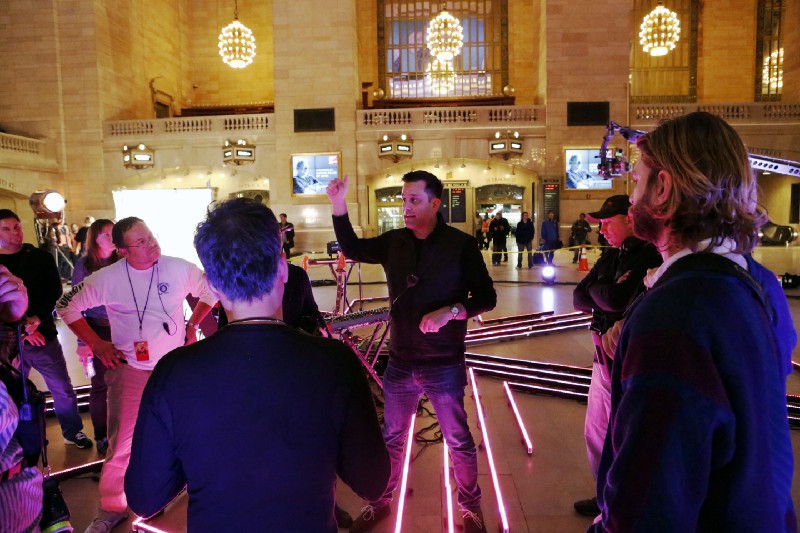
What’s Next For Landmarks Live:
The show is still evolving. In entertainment today, there are different avenues to share this footage that you were never able to properly share before. Some of the episodes coming up are heavy on the travel involved, lifestyle and the artist relationship, more than the concert.
We’re getting ready for a global launch early next year. In addition, we’re discussing ways to make Landmarks more of a brand where we may have localized segments like a Landmarks Australia or Landmarks Sweden. A bunch of country artists have also come our way, so we are packaging a format that speaks just to country. Our team works around the clock and we already have 65 landmarks that have been pre-cleared, like the Golden Gate Bridge and Eiffel Tower.
We are also exploring digital options for the near future. We’ve really taken our time in developing this show to be done the right way. I take a lot of pride in that we did not settle for the first deal that came our way. We felt PBS would be a great partner because of their track record with music — Austin City Limits, Live at Lincoln Center, these have all been on the air for more than 40 seasons.
Still to Come … Kings of Leon:
The Kings of Leon show that we have coming up was a thrill and came very naturally. They grew up right outside of Memphis. This is one of my favorite episodes. It’s amazing. Chad hit it off with the guys right away. They shared some great stories. We shot them at the Beale Street Music Festival. They talk about their memories of doing only christian music around there. Caleb and Nathan Followill went to see Peter Frampton in 2000. That was the first time they saw a rock concert. They looked at each other and said, “This is the kind of music we should be playing.” That night they went back and started writing rock music and the rest is history. They explain how they always wanted to headline this festival, and for them to now do that in their hometown was a very special show for them. We went out to the town they grew up in, 30 minutes outside Memphis, we went to the church where they went to school, which they hadn’t been back to in years. We had Chad tour the Civil Rights museum and embed in the local culture. We really dug deep into telling the story of Memphis and how it ties in with the band. Most people don’t see them as a Memphis band, they see them as a Nashville or Oklahoma group, but they are actually a Memphis band. They don’t get the chance to tell those stories. When you make yourself available to do press, it’s usually a quick interview and the same questions over-and-over about the new record, the new single, or a tour coming up. This is about digging deep and finding these great stories. Even when DVD’s started to crash, I continued to do it with bands (like Alter Bridge) because I felt it was important to document that point in the band’s career.
The Landmarks Live Impact:
Back in January, we aired Brad Paisley performing at West Virginia University. This was a special one to me having gone to school there. I’ve been involved with the football team for years. I had suggested we do something with Brad Paisley and WVU said they had tried, but it never works out. I happen to be on the board of Haiti project. We work with Sean Penn a lot. I went to Sean’s Golden Globes party and who’s there standing right next to me? Brad Paisley! We talked through the economics of how to make the show happen and we did it. Brad has such a deep WVU history there. His earliest memories are going to football games. It was really cool to do that for the state. It’s funny when you look at our show, we’ll talk about the Acropolis or Taj Mahal and then you say Mountaineer Field, Morgantown, West Virginia and people say, “What the hell?” But it’s the most important landmark in the entire state. As a result, we are now working with them on new ways to bring tourism in.
The World is Our Stage:
People were not supportive of this Landmarks Live concept for years. We just kept going. It was a huge risk. To have it actually come together and see people from around the world connect with each other has been surreal. I’ve never worked so hard. I had my core team and my family come to New York for the series premiere. The party was the night before, but for the first show I just wanted to be with the people closest to me. We had a suite at the Dream Hotel and we watched it together. About two minutes in, it hit me that I am watching the final product and I got very emotional.
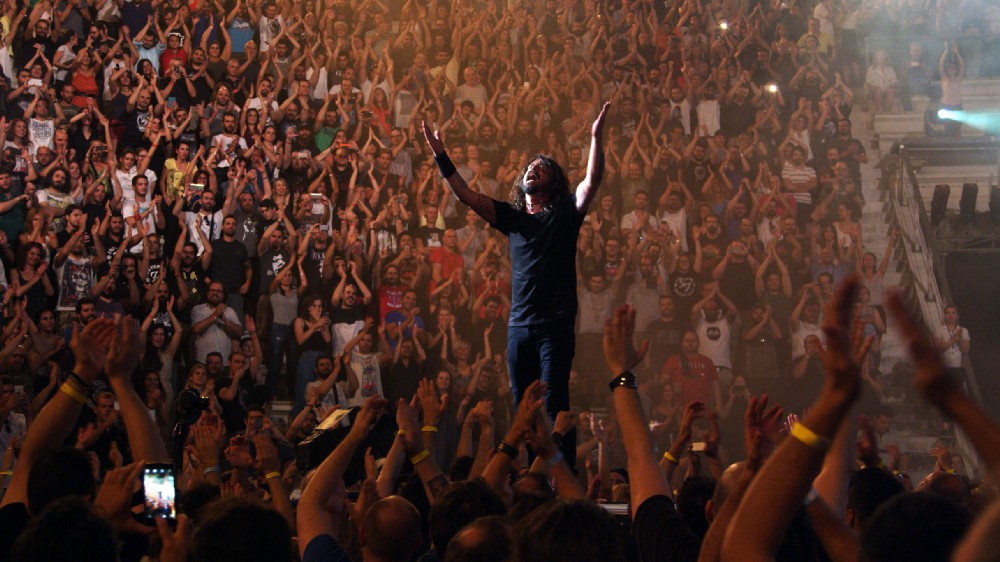
Right now, I’m sitting in my conference room where I have a blown-up picture on the wall of Dave Grohl at the Acropolis. Looking at it, I still can’t believe we pulled that off. It’s almost like a drug, you chase these big shows and we welcome being challenged. The overall payoff for everyone is so special. There were moments in the Foo Fighters show where you see Dave just looking at the audience and you can tell he is in awe. The ultimate reward for us is if 30 years from now, an artist is looking back at their career and they are thinking about the moment they did our show.
~Dan Catullo
Watch the trailer for Foo Fighters at the Acropolis:
Catch Landmarks Live in Concert: Foo Fighters at the Acropolis 10pm tomorrow on PBS. Click here to check local listings.
*all photos courtesy of Landmarks Live in Concert
Fore more information visit LandmarksLive.com
Follow Landmarks Live on: twitter | facebook | instagram
If you enjoyed, please recommend below and sign up for the AW newsletter
Follow Artist Waves on: facebook, twitter & medium
~ follow Jeff Gorra | twitter @JeffGorra |JeffGorra@ArtistWaves.com
